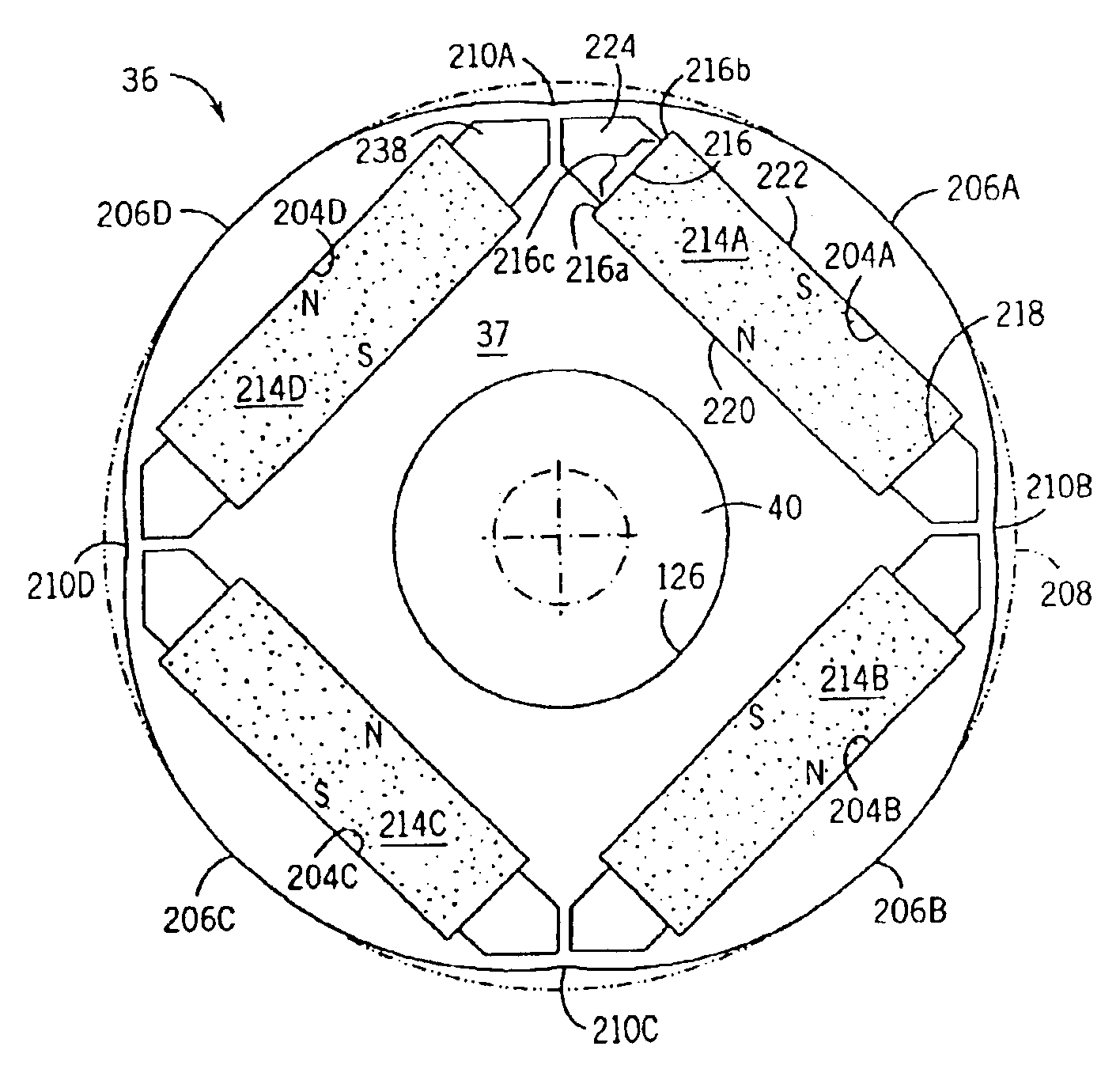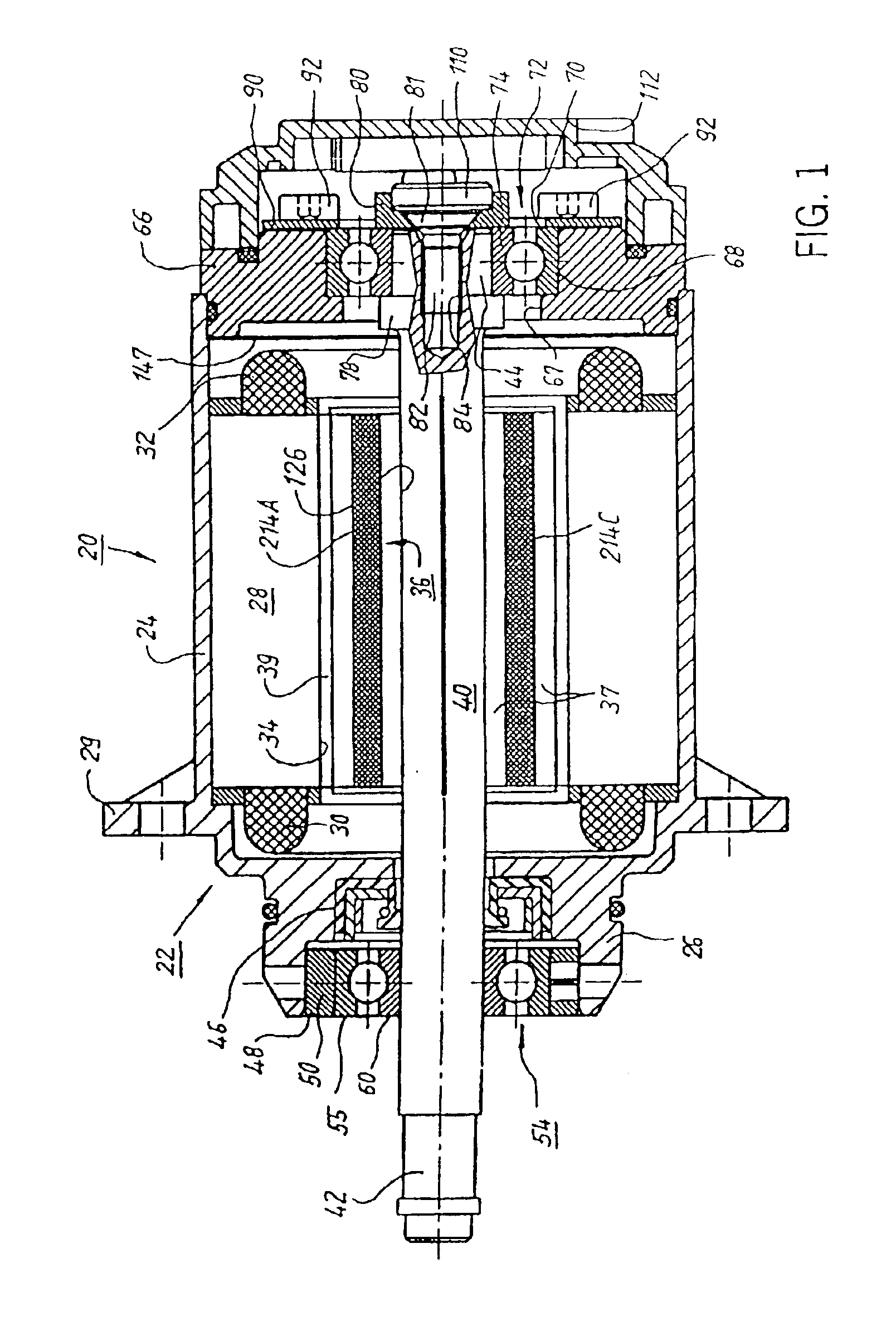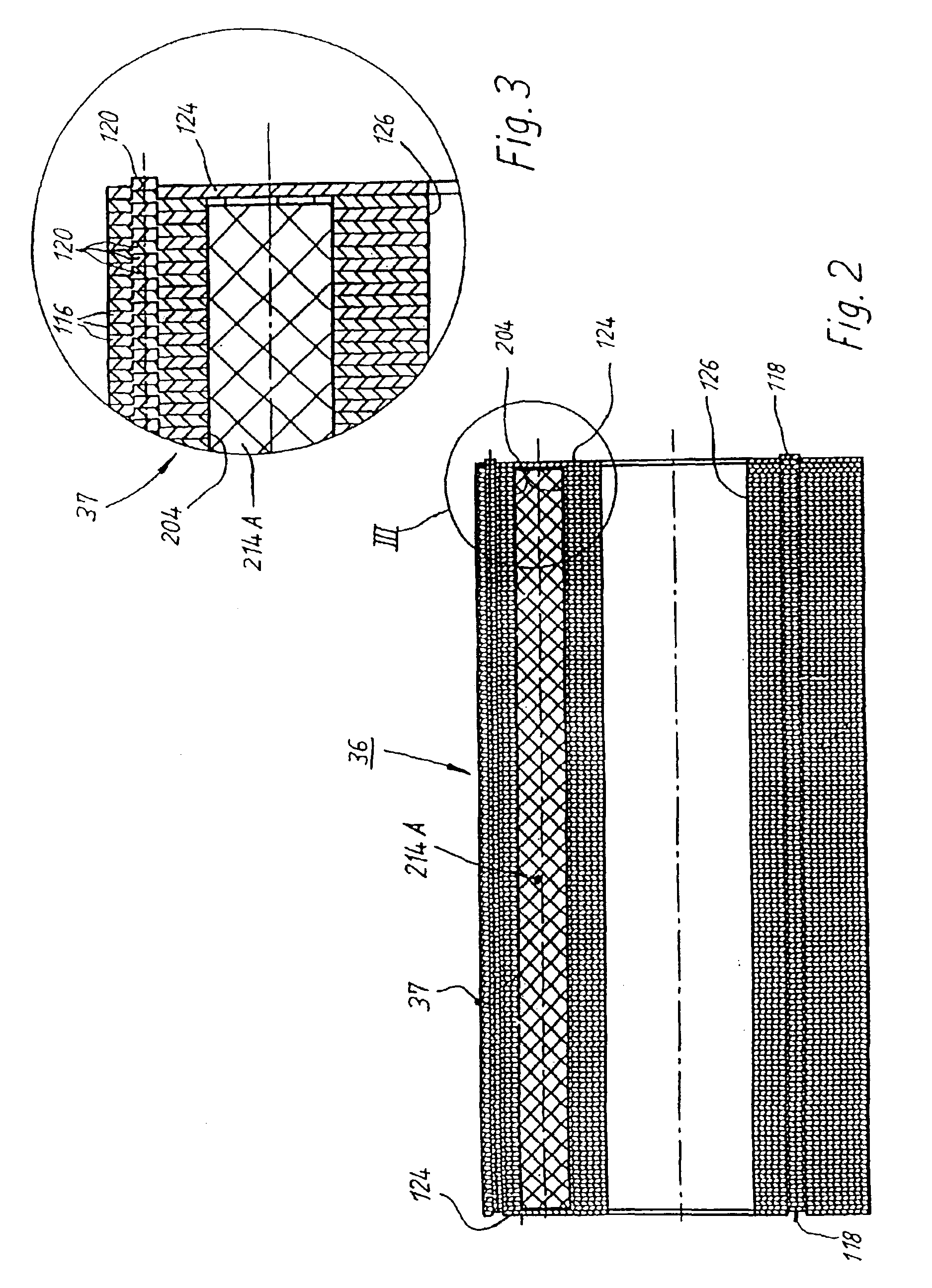Internal rotor motor
a rotor motor and internal technology, applied in the direction of dynamo-electric components synchronous machines with rotating armatures and stationary magnets, etc., can solve the problem of general insufficient power of ironless stators, and achieve the effect of improving characteristics, reducing cogging torque, and reducing cogging torqu
- Summary
- Abstract
- Description
- Claims
- Application Information
AI Technical Summary
Benefits of technology
Problems solved by technology
Method used
Image
Examples
Embodiment Construction
[0025]FIG. 1 shows an electronically commutated internal rotor motor 20 with a housing 22 having a cylindrical housing portion 24, an A-side bell 26 and a securing flange 29.
[0026]In the cylindrical housing portion 24, there is arranged the lamination stack 128 (FIG. 9) of an external stator 28 whose winding heads are designated 30 and 32. Stator 28 has an internal recess 34, in which the rotor is received. The rotor is a four-pole internal rotor 36 with a lamination stack 37 of electrical steel, preferably alloy V400, and permanent magnets 214A through 214D (Cf. FIGS. 9-11). Rotor 36 is arranged on a shaft 40, whose drive end is designated 42 and whose inner end is designated 44. An air gap 39 separates stator 28 from rotor 36. Such a motor can be called a “permanently excited synchronous internal rotor machine.”
[0027]In the A-side bell 26, in the usual manner, a seal 46 is provided for the shaft 40. Also there is a recess 48, into which is placed a guide element 50 for the outer r...
PUM
 Login to View More
Login to View More Abstract
Description
Claims
Application Information
 Login to View More
Login to View More - R&D
- Intellectual Property
- Life Sciences
- Materials
- Tech Scout
- Unparalleled Data Quality
- Higher Quality Content
- 60% Fewer Hallucinations
Browse by: Latest US Patents, China's latest patents, Technical Efficacy Thesaurus, Application Domain, Technology Topic, Popular Technical Reports.
© 2025 PatSnap. All rights reserved.Legal|Privacy policy|Modern Slavery Act Transparency Statement|Sitemap|About US| Contact US: help@patsnap.com



